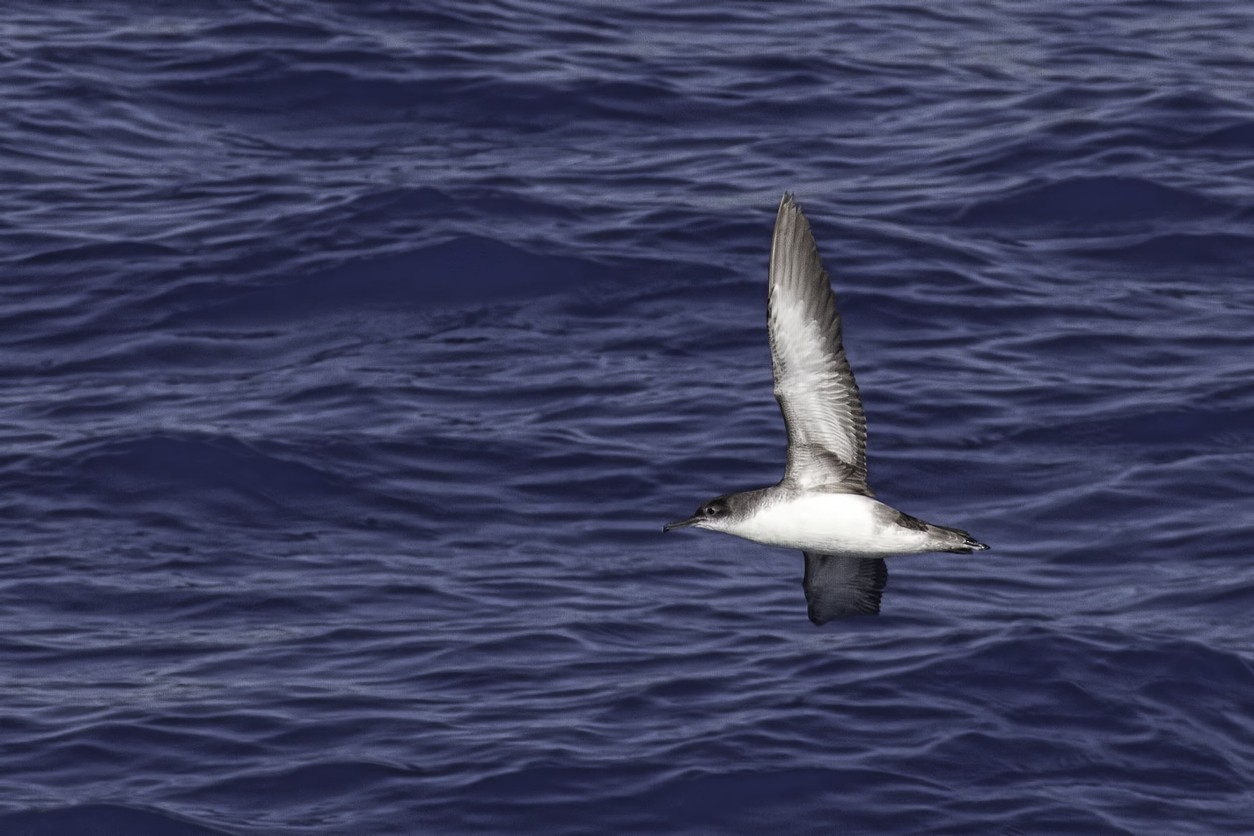Yelkouan Shearwater
A species of Typical Shearwaters Scientific name : Puffinus yelkouan Genus : Typical Shearwaters
Yelkouan Shearwater, A species of Typical Shearwaters
Botanical name: Puffinus yelkouan
Genus: Typical Shearwaters
Content
Description General Info

Description
Yelkouan shearwaters are 30–38 cm long, with a 76–89 cm wingspan. It has the typically "shearing" flight of the genus, dipping from side to side on stiff wings with few wingbeats, the wingtips almost touching the water. This bird looks like a flying cross, with its wing held at right angles to the body, and it changes from very dark brown to white as the dark upperparts and paler undersides are alternately exposed as it travels low over the sea. It is silent at sea, but at night the breeding colonies are alive with raucous cackling calls, higher pitched and more drawn out than the Manx shearwater's. The yelkouan shearwater has a more contrasted appearance than the Balearic shearwater with which its winter range overlaps, since the latter species is brown above and dirty white below. It is very similar to the black-and-white Manx shearwater of the Atlantic, and stray birds out of their usual range are very difficult to identify with certainty. Also, at least one mixed breeding colony of the yelkouan and the Balearic shearwaters exists on Menorca. A study of these birds recommended that a combination of morphological characteristics and DNA sequence data should be required at least for scientific purposes to assign individual birds to either species. 
Size
40 cm
Life Expectancy
23 years
Nest Placement
Burrow
Dite type
Piscivorous
General Info
Feeding Habits
Bird food type
Species Status
Yelkouan shearwaters breed on islands and coastal cliffs in the eastern and central Mediterranean. Most winter in that sea, but small numbers enter the Atlantic in late summer. This species nests in burrows which are only visited at night to avoid predation by large gulls. This is a gregarious species, which can be seen in large numbers from boats or headlands, especially in autumn. The yelkouan shearwater feeds on fish and molluscs. It follows fishing ships when offal is being thrown. It is under some threat from the development of holiday resorts near its breeding sites, and also from animals such as rats and cats. On Le Levant Island, one of its major breeding locations, cats kill thousands of birds each year and it is estimated that this may lead to local extinction in several decades. The study of the Menorcan colony concluded that at least in these westernmost birds, genetic variation was extremely low, suggesting that the yelkouan shearwater may have suffered a marked population decline historically and thus, while not threatened judging from its absolute numbers, it could be vulnerable to adverse effects of inbreeding. It was formerly classified as a species of least concern by the IUCN. But new research has shown it to be rarer than it was believed. Consequently, it was uplisted to near threatened status in 2008 and vulnerable in 2012. 


Scientific Classification
Phylum
Chordates Class
Birds Order
Albatrosses and Petrels Family
Shearwaters and petrels Genus
Typical Shearwaters Species
Yelkouan Shearwater